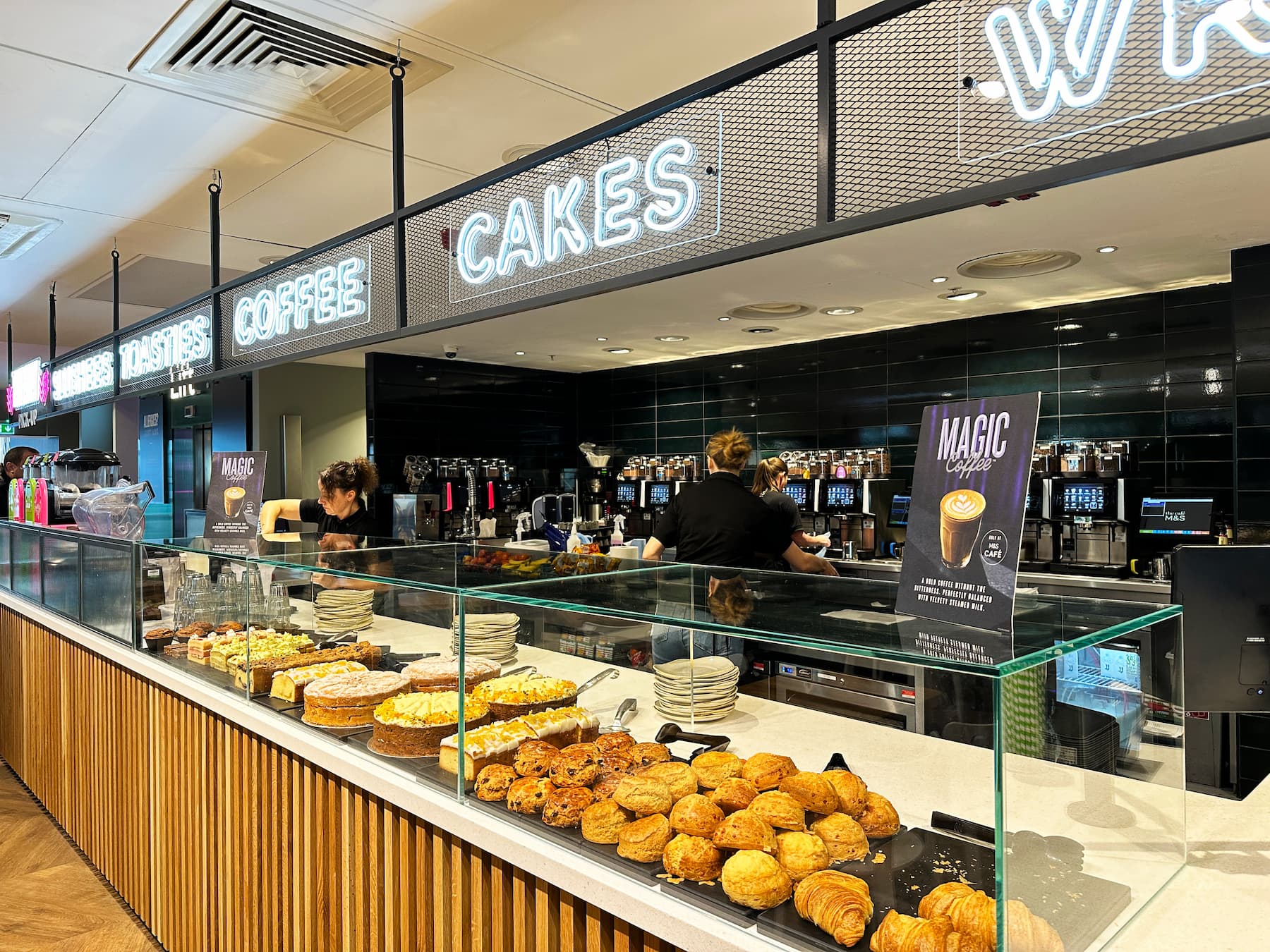Food counter displays play a vital role in the hospitality sector, serving as the most effective means to promote and display your products and drive sales. Whether it’s a hotel quick service cafe, a restaurant servery counter, or a café cake display counter, these areas are strategically layed out to capture the attention of customers and influence their purchasing decisions. Here are some ideas on how to create an effective counter display:
- Strategic Placement: The location of the contents of your counter display is crucial for its effectiveness. Key items should be positioned where they can easily catch the eye of customers as they enter or pass by. Placing them near the checkout counter or in areas where customers queue can maximise visibility and encourage impulse purchases. Or you can place complimentary items next to each other, so if a customer picks one, they can be encouraged to also pick the other.
- Attractive Design: The design of the counter display should be visually appealing and aligned with the overall branding of the establishment. It should incorporate easy to use access and or food display depending on how the food is served. Clear messaging should communicate the price of the products on display where necessary plus product names and descriptions to entice customers to make a purchase.
- Product Selection: Careful consideration should be given to the selection of products showcased on the counter display. It should feature items that are popular and those you are keen to move if they have a shelf life for example. This may include fresh cakes and snacks, beverages or promotional items that appeal to the target demographic of the venue.
- Product Placement and Organisation: The layout of the counter display should be well-organised to allow for easy browsing for customers. Products should be neatly arranged with ample spacing between items to prevent overcrowding. Grouping similar items together and arranging them by category or theme can help customers quickly locate what they’re looking for.
- Promotional Messaging: Incorporating promotional messaging can incentivise customers to make a purchase. This may include limited-time offers, discounts, or special promotions displayed prominently on the counter display. Engaging calls-to-action can encourage impulse buying behaviour and drive sales.
- Interactive Elements: Adding interactive elements to the counter display can enhance customer engagement and create a memorable experience. This could involve interactive touchscreen displays, product samples for customers to try, or QR codes linking to additional information or exclusive offers.
- Durability and Maintenance: The counter display should be constructed from durable materials capable of withstanding the rigours of daily use in a hospitality environment. Regular maintenance and upkeep are essential to ensure that the display remains clean, organised, and visually appealing at all times.
- Compliance with Regulations: It’s important to ensure that the counter display complies with relevant regulations and guidelines, particularly concerning food safety and hygiene standards. This includes proper storage of perishable items, temperature control, adherence to labelling requirements, and maintaining cleanliness to prevent contamination.
In conclusion, a successful commercial counter display in the hospitality sector requires careful attention to key elements such as product placement, attractive visual design, product selection, organisation, promotional messaging, interactive elements, durability, maintenance, and regulatory compliance. By incorporating these elements into the design and implementation of the display, hospitality establishments can effectively showcase products, enhance the customer experience, and drive sales.
If you need assistance or are looking for some inspiration please contact the Proline team. We have many successful projects “under our belt” and would be happy to help make your next project a success.

